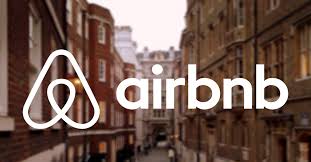
Meet a cat. And another. There are nine of them in total, climbing elaborate sisal-wrapped towers, lazing in windows gazing at people passing on the street, and generally being cats in a cat cafe.
So what do they use to make coffee in a cat cafe? A purr-colator, of course!
The first North American cat café opened in June 2015.
At KitTea in San Francisco you can sit in a lounge and drink unlimited tea while getting smooches from as many cats as you can handle. All are from shelters and available for adoption. The pet café concept originally came from Japan where it’s been an integrated part of Japan’s culture for many years (but why stop there… bunny and goat cafés are currently the rage throughout Tokyo). What’s striking about San Francisco’s KitTea is it’s in a country with notoriously strict food handling regulations and marks a trend of growth in business that cater to the needs of pet lovers and owners. California only passed a law in 2014 allowing dogs on patio areas of restaurants.
Pet ownership has tripled in the USA since the 1970s and today 68% of households own a pet (according to a recent American Pet Products Association study). Other key findings: 10% of these are new pet owners, mostly made up of the valuable Gen X and Gen Y demographics. With such numbers, businesses that ignore their needs, do so at their peril.
In many European countries businesses that cater for pet owners are easier to find; in Czech Republic for example businesses where you can’t take a dog actually have a sign (there are few signs; so you can take your dog practically anywhere). The cat cafes of Prague add life to its romantic architecture. It works there, and in Paris, so how about other Western countries like the USA?
Starting with rental accommodation: a recent survey by Apartments.com found that 70% of renters have pets, yet landlords and apartment policies still discriminate against prospective tenants who own pets. Brad Long of Apartments.com believes this is a case where demand will drive supply, saying: “We believe these trends may increase demand for new apartment construction that includes innovative pet-friendly spaces, amenities and policies.”
Thinking of taking Fido or Fifi on holiday? You should find that a bit easier. Bringfido.com, a website which promotes pet friendly hotels, restaurants and events in the USA and Canada — has seen its listings grow from 10,000 to 100,000 in the past couple of years. Petsmart has been holding a competition for the most pet friendly city, and found many contenders: Austin, Texas for example has 40 restaurants where you can take your dog and 109 pet friendly hotels. It can pay off for businesses wanting to attract this (high spending) demographic. These customers are brand loyal — and marketing research shows they return to eat at these restaurants and stay at these hotels even if they don’t have their pet with them.
Want to take your pet on excursions? There are now even business rising to cater for this. You will find pet-friendly wineries and breweries, places where you and your dog can pan for gold, and in Los Angeles even nightclubs where you can party with your pet. Many major retail stores now let you take your dog along shopping including Barnes and Noble, Macy’s and PetSmart. (But remember if he soils it — you just brought it).
If your pet’s lonely while you’re at work, why not take them to the office? Google (well kknown for thinking outside the workspace environmental box) is one of a growing number of companies where you can take your pet (usually a dog). Rather than interfere with your work, studies have shown that having animals around can make workers more productive. Google’s Code of Conduct even states: “affection for our canine friends is an integral facet of our corporate culture.”
Not so good if you’re a cat lover, but it’s a start!
What the rise and rise of pet friendly businesses recognizes is that pets are an integrated part of an increasing number of people’s lives. People who want to spent more time with them: eat, work, play and spend…




